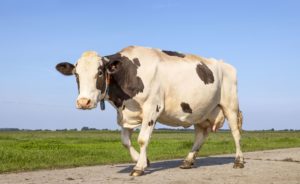However, that figure can be reduced significantly by detecting and treating it early. Prevention is always better than cure, and mobility scoring plays a critical role as it allows farmers to promptly identify cows that would benefit from treatment. Specialist dairy vet, Owen Atkinson from Dairy Veterinary Consultancy, gives his top 5 tips for successful mobility scoring.
1) Be trained
Whether you have been farming for 50 years or are fresh out of college, you can’t presume that you know how to mobility score unless you’re properly trained. To prevent severe lameness cases by treating those cows who are starting to become lame in the early stages, you need to be able to confidently use the AHDB mobility scoring 0, 1, 2, 3 scale. Training provides you with a good understanding of the scale, so it can be implemented correctly. It’s common for farmers, vets, and foot trimmers to be able to identify the hopping lame cows, that are score 3, but often, there’s confusion between score 2 and 3 cows, and what a score 1 case actually looks like. This differentiation is vital if you want to get on top of the issue and implement early effective treatment. Look out for local mobility scoring training! It is advocated and encouraged that all those working with the cows take part. This allows everyone to be on the same page when it comes to identifying the level of lameness on farm.
2) Use an independent and accredited mobility scorer from time-to-time
When you are working with your cows every day, it can be difficult to notice minor changes to the level of lameness in each individual case. The use of an independent scorer from time to time offers a fresh set of eyes, and they are often more critical to detect the more mild lameness cases than you may be with your own cows. See it as a useful refresher too, an independent person can allow you to re-calibrate your own scoring. Independent scorers should be trained and annually accredited with the Register of Mobility Scorers. See www.RoMS.org.uk for further information.
3) Allow cows to walk at their own speed
Farmers often ask about when is the best time to mobility score or say that they don’t have the time to incorporate it into their weekly routine. To accurately score, cows need to be walking at their own pace, so the best time to do so is often when they are leaving the parlour or walking back up the tracks to the fields, or to be milked. This way, the scoring can become part of the milking routine. Dedicating time to mobility scoring is important, in a similar way to how many herds treat heat detection.
4) Ensure scoring is done frequently
Mobility scoring should be done regularly. To detect any new mild cases, it is important to score every two weeks so that effective treatment can be promptly given. Aim to have an independent scorer every three to six months to monitor the whole herd so that you can review that you’re capturing and monitoring all score 2 and 3 cases.
5) Treatment
It’s important that you have the resources available on farm to promptly treat all lameness cases. This has been proven to reduce the number of reoccurring incidences and is known as EDPET (Early Detection, Prompt Effective Treatment), one of the four strands of the AHDB Healthy Feet Programme. Make sure you have the facilities to be able to pick up cows’ feet to treat. A good cattle crush should mean that it takes one person one minute to get one cow into the crush to safely pick up the hoof to see the root cause of the lameness. If the case is digital dermatitis, thorough cleaning of the lesion and application of a licensed antibacterial spray without a bandage is generally the recommended treatment. Regular foot bathing is useful for control.
For claw horn lesions, such as sole bruising, sole ulcers and white line disease, research indicates that administering a course of NSAID injections, for example, ketoprofen, along with corrective trimming of the hoof and application of a hoof block, can significantly speed up recovery rates and reduce the chances of the cow becoming lame again in the future. It’s important to then record the treatment and score of each cow so that you can monitor cases to see that the treatment and your foot health measures are working.
For further information on mobility scoring, discuss options with your NWF Sales Specialist, call 0800 756 2787 or visit our Technical Services page.
